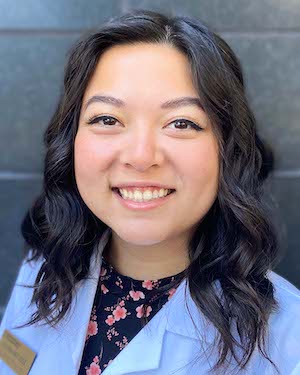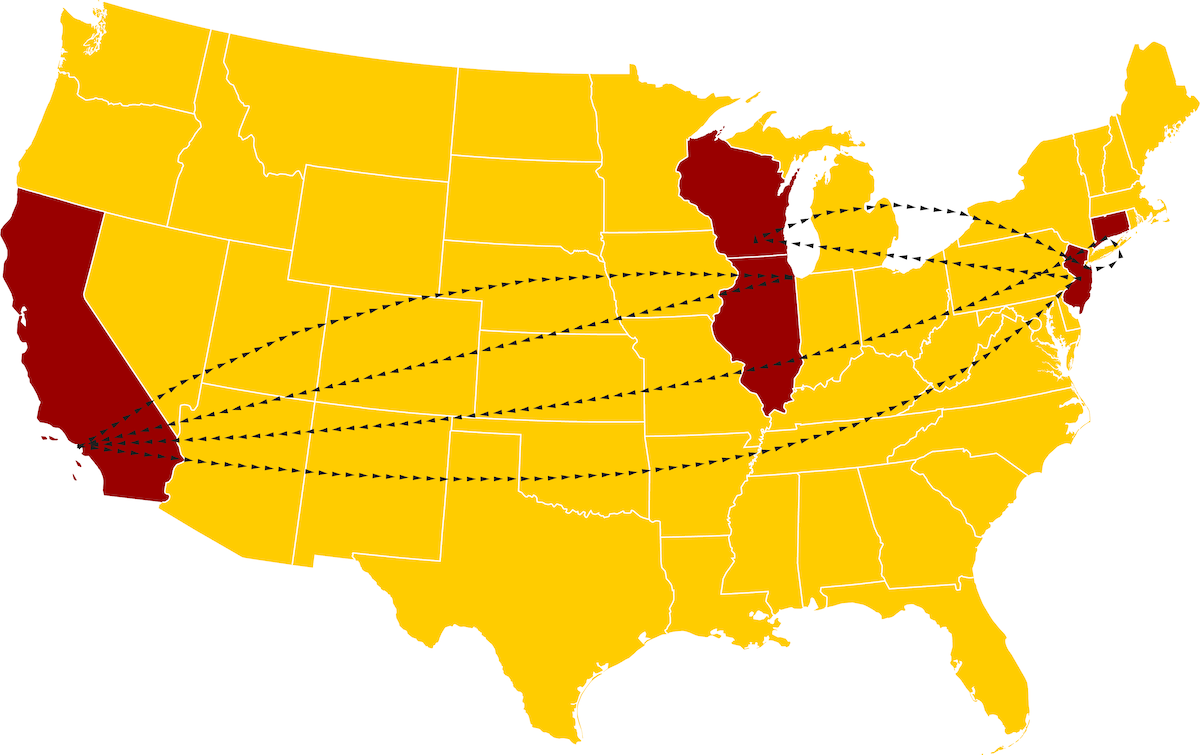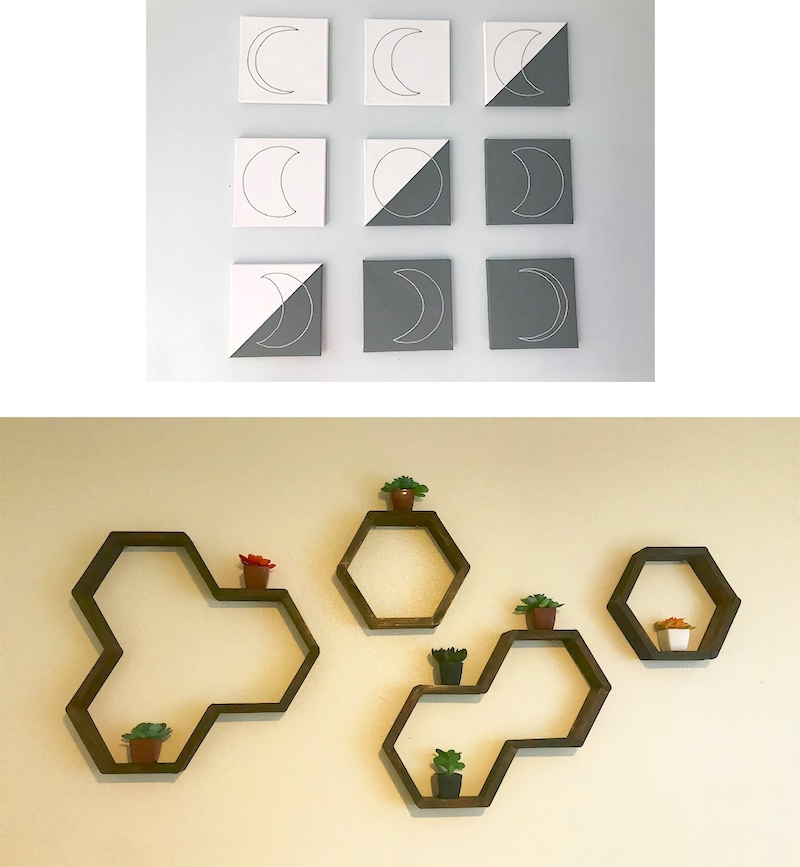Student Blog
Housing and Transportation

These Are A Few Of My Favorite Things ⟩
January 21, 2023, by Mika
Housing and Transportation International Life Hacks Living in LA School/Life Balance
Hello again and Happy New Year, my friends!
I wanted to start off the year with a blogpost about one my favorite childhood songs from the movie, The Sound of Music. If you have watched the movie, you might have remembered the scene where Fräulein Maria comforts the children amidst a storm. She tells them (or rather, sings to them) that whenever she feels scared or sad, she remembers her favorite things to help herself cheer up. Now, as a material girl, I kind of used this coping strategy as well to help me adapt to life here in Los Angeles. With that, I present to you some of my favorite things or must-have’s that helped me the past months.
1. Water Filter Pitcher
Moving to a new country requires you to find ways on how locals get their basics, like food or water. Based on the suggestions of some friends and family living in the States, they recommended me to get the Brita water filter pitcher. So far, I don’t have any problems with this brand that I bought; however, you can also opt to buy cheaper brands. These water filters also come in different sizes (even in a dispenser) and are available in local supermarkets like Target and Walmart.
2. Tide Pods
This has been a game changer for me doing laundry since it makes everything more efficient and quicker. This was not a common product back at home so when I discovered this, I really felt like a caveman discovering new technology.
3. Sink Garbage Disposal Unit
Okay, this device got me shouting U.S.A., U.S.A.! to my friends back at home LOL. Again, we don’t have this technology so I was happy to discover this in most American households since it made washing the dishes more convenient.
4. Air Fryer
This is not new technology for me but it definitely helped me save time in cooking meals in between studying. Shoutout to my lovely roommate for sharing this with all of us in the apartment!
5. Tabo (Dipper)
The Filipino in me is definitely showing with this one. I definitely cannot do my self-care occupations or other household chores without my beloved tabo or dipper. Although you can purchase these through Amazon or in Filipino supermarkets, I was able to buy a portable one (it was made of a rubber-like material so I could fold it to fit in my luggage) back home in the Philippines.
6. Dustpan
From what I understand, most locals use vacuum cleaners to clean their floors. However, I like to go Filipino old school and use a broom and a dustpan to clean some of my floors. For those who prefer cleaning this way like me, I wanted to share that I bought a detachable dustpan back at home and brought it here since most of the dustpans here were hand-held and quite-small, which often triggered my back pain when cleaning.
7. Mobile Applications
I found several mobile applications that had made my stay here in L.A. more convenient. Here are a few I found helpful:
- Ride-sharing apps like Uber and Lyft
- Public transportation apps like Transit and Tap
- Online shopping apps like Amazon (As a student, you can get Amazon Prime for free for 6 months!)
- Food and grocery delivery apps like Door Dash, Uber Eats, Amazon Fresh and Wee! (an Asian grocery delivery application)
- Yelp to find recommendations of places to eat around the area
- USC Gateway mobile app to help you know everything that’s happening in campus and to navigate your university life
8. Gifts (and snacks!) from home
Moving out of your comfort zone to a new country will bring about bouts of homesickness and loneliness from time to time. That is normal — it’s okay not to feel okay sometimes! To help me get through those moments, I’m blessed to have a good set of family and friends who sent some gifts and snacks to help me remember home. It definitely also helped that social media made keeping in touch with them possible!
And that’s the end of my list! What about you, what are your favorite things that get you by?
⋯

Finding Housing in LA When Moving from Out of State! ⟩
January 9, 2023, by Leah
Community Housing and Transportation Life Hacks Living in LA
While from Northern California, I had been living in Seattle, WA for a few years before moving to LA for USC.
Things I considered when looking for housing in LA
Cost
While there are plenty of benefits to living in Currie Hall (convenience / community aspect of living around a lot of other OT students) I thought it was too expensive for my budget. I wanted to find something more affordable in the East LA area. I paid $860/month the first year and now $950/month (boo inflation) but I still found this more affordable than a lot of other options I was seeing.
Some neighborhoods I checked out
Alhambra, Pasadena, Highland Park, Monterey Park, San Gabriel, Arcadia, Los Feliz, and Silverlake.
Who to live with
I was interested in living with other graduate students since we would be understanding of each other’s schedules and interests. I moved in with 2 second year physical therapy students. I loved that we were in fields similar enough to be excited about what the other person was studying, but I felt like it relieved me from pressure of always having to talk about school with roommates. It was also super helpful that the apartment was already mostly furnished since I did not have furniture from when I lived in Washington.
My interests / hobbies
While living in Seattle, some of my favorite occupations included being outdoors hiking or camping. I decided to live in the Alhambra area due to its easy access to the Los Angeles National Forest. I love seeing mountains from my window and being only 20 minutes away from several trailheads. If you are really interested in the beach / surfing / etc. then West LA might be a better fit!
Helpful Facebook pages I joined
- USC Graduate Student Housing
facebook.com/groups/344453725628321 - Young Females: LA — Los Angeles Housing, Rentals, Rooms and Sublets
facebook.com/groups/375969193143590 - House Apts Room for rent in Glendale, Pasadena, Burbank, Alhambra, Arcadia
facebook.com/groups/GlendaleRoomForRent
⋯

Moving to Los Angeles — Part 1 ⟩
February 4, 2022, by Guy
Housing and Transportation
Very soon there will be many of you who will make the decision to come to USC to study occupational therapy or occupational science. Congratulations! For some of you this will not only be the start of a new career but will also be a major move to a new city. You may be like me and be moving from all the way across the country, or you might be coming from another part of California. Either way you will be dealing with the stress of moving to a place where you have never lived before. I don’t know about you, but I never spent any time in Los Angeles (LA). I had been to the airport a few times, and downtown once. I had gone to Disneyland, and I went to the Rose Bowl for a football game. Other than that, I had no clue about LA. I also had many preconceived ideas of Los Angeles. I knew that the public transportation system was nothing compared to NYC so I would probably need a car. I knew there was a lot of traffic and LA was quite large so getting around in the car could be rough. I heard living in LA was much cheaper than NYC. I heard that living on the beach or the Westside was the only way to go. Finally, everyone told me that as a city, LA offered just as many cool things to do as New York. Some of my ideas have turned out to be true and some have turned out to be very wrong. Before I came to LA there were a few questions I wish I had the answers to. Over the next few blogs, I will be answering those questions and talking about what the transition to living in LA has been like for me. Here are some of the questions I had:
Do I need a car?
It depends on where you live and what you like to do. If you end up living on or near the Health Science Campus or the Main Campus, and plan on studying most of the time and not needing or wanting to go outside of the LA metro area including the beach, where there is a will there is a way. You might be able to get away without your own car by using UBER or Lyft, university sponsored outings, the metro or bus, and the kindness of your fellow students who have cars. I know students who live on the Health Campus and near the main campus who don’t have cars and have been able to have a great time exploring LA even during the pandemic. Not having a car is possible, especially if you live on campus but it depends on how much you need or want to get away from school. However, make no mistake about it, if you are coming from a city where the public transportation enabled you to go without a car (I’m looking at you Chicago, Boston, NYC, DC, any major international city) and you are used to being able to just jump on a train or bus quickly to get anywhere you want to go in minutes, then you might want to consider figuring out how to get yourself a car or at least watch one of the many amusing videos out there by people who live in LA without a car. Just google “how to live in LA without a car”.
If you live off campus it is also possible to live without a car but much more difficult. I live in a neighborhood that is not very far from the main campus or the Health Science campus. Even under the best conditions when I have used public transportation to get to school it takes me a minimum of 60 minutes for what usually takes me 15 – 30-minutes to drive myself. When we decided to buy a car we ended up getting a car with excellent gas milage (close to 38 miles/gallon) and are even now contemplating getting an electric car. LA gas prices are not cheap. If you are coming from the South or the Midwest you will be shocked by California gas prices. Don’t be surprised if you see gas that costs $4.50/gallon or more!
Can I live on the beach or the Westside? What is the Westside?
Well to give you a sense of Los Angeles, and my apology to native Angelenos reading this, the Westside of LA pretty much encompasses the beach areas of LA from Playa del Rey in the south and near the airport to Malibu in the north. It also includes areas like Brentwood (where VP Kamala Harris used to live), West Hollywood or WeHo, Beverly Hills, Santa Monica, Venice, Century City, and Westwood (where UCLA is located). It’s generally anything close to the highway/freeway called the 405. Before I got to LA, every Angeleno I met had very strong opinions about the Westside. They either thought it was the only place to live in LA or was too difficult to get to from other parts of the city. I didn’t have a clue what all this controversy was about. Living where I live now, I get it and I don’t really go there much. Sometimes on the weekend I will go to the beach or to meet a friend, but rarely do I go there during the week because of traffic. It can take me an hour or more in traffic especially in the morning or night! However, I do know some great people there and it is a nice part of LA. If you have a strong desire to live on the beach or the Westside, when you start to look for a place just be prepared for two things: it can be much more expensive than other parts of the city, and you will need to consider the distance to school. It’s quite far from the Health Science Campus. Look it up on a map.
If I can’t live at the beach, where else would be nice?
If you are looking for something not too far away from the beach but kind of in the middle, there are students who live in Inglewood, Mid-City, Culver City, and Fairfax/Melrose. I also know some students that are big fans of living in Long Beach. All these neighborhoods for the exception of Long Beach are equal distance from the beach and the Health Science campus and are much more affordable than living at the beach. There are some great neighborhoods in the eastern and northern part of LA too. I know students who live in Echo Park, Silver Lake, Burbank, South Pasadena, Glendale, and even parts of the Valley. While I don’t know much about any of those other neighborhoods, I do know students who live in these neighborhoods, like it, and the seem to make the commute work. These areas are also relatively affordable. Check out this article in Thrillist if you want to know more: Where should I move in Los Angeles?
When I was searching for a place, I primarily used the website Zillow and RentCafe. Zillow is great because there is a walker score for every neighborhood, which basically tells you if you can get places around the neighborhood by walking and without needing a car. It also gives you a sense of how much greenI was also fortunate enough to make a trip out to LA and spend a couple of nights in an Airbnb in one of the neighborhoods that looked interesting to me (Los Feliz). Funny thing is now I live right down the street from where the Airbnb was!
I wish you the best of luck as you begin to think about and plan your move to Los Angeles because LA rent is not cheap. One bedrooms in LA on the low end are about $1800-$2,000/month! Renting a room is of course less expensive if you don’t mind roommates, and there is always on-campus housing. For more information about living on or near campus, check out this great blog from a Joyce, a former ambassador: Help! Where do I live?!. Also please feel free to reach out to me or any of the other ambassadors if you have any questions about where to live.
Next up: What’s it like after you move to LA?
⋯

Hacking Houses into Homes ⟩
September 22, 2021, by Alyssa
Housing and Transportation Life Hacks Living in LA
Like a lot of people, I’ve spent most of my time over the past year and a half at home. In a series of events (some fortunate, others not so much), “home” for me has looked like a USC dorm, my childhood bedroom, and several short term apartments. Since March 2020, my living situation has been like a game of ping pong: LA → New Jersey (1 month) → Wisconsin (1 month) → New Jersey (2 months) → Connecticut (4 months) → LA (4 months) → Illinois (3 months) → LA (present).

1.5 years of moving around
On top of hopping between states, I was constantly changing the spaces themselves. I can get obsessive over tetris-ing my things into a new space as logically as possible. I draw out floor plans and make models on the Sims. Then, I rearrange my house when I’m stressed (it is a hazard of living with me, any roommate of mine can attest). But what all of this moving, planning, and rearranging has taught me is that there’s no right or wrong answer for a living space — the best space is whatever works for the people living in it.
We’ve learned repeatedly in class that an environment that matches a person’s needs can support their ability to participate in occupations. If you’re considering changing your current setup, moving to LA for grad school, or trying out-of-area fieldwork in a new city — let’s talk tips for making your living environment into a home.
Locations for Leisure
Especially if you are working from home, it can be easy to forget that home is also a place for leisure. Think about how you can make space for leisure activities you like. This could be leaving floor space for a yoga mat, setting up a craft corner, or establishing a comfy space to read. For me, this means having a dedicated table to do puzzles.
Match Your Mess
Nobody’s perfect and sometimes our habits/routines are messy. Instead of shaming yourself for it, consider how your environment can support you. Here are 2 examples:
- If I don’t see something, it isn’t there. I keep my clothes easily visible stacked on bookshelves instead of hidden in drawers. In my fridge, leftovers are on the top shelf, the condiments are in the vegetable drawer, and all vegetables are in the door (this one has really saved me from wasting food).
- Part of my daily routine is trying on no less than 4 outfits before I pick one and then I either run out of time or, honestly, don’t prioritize putting them back. This used to result in a disaster zone in my bedroom and confusion between what clothes were dirty vs clean. My solution now is to have a separate basket for clothes-to-put-back-later that I can reorganize when I have time.
While these might make no sense to you, my point is that there are no rules. Match your home to your habits/routines.
Furniture is Fluid
I’ve gotten almost all of my furniture second-hand and a lot of it is not used for its intended purpose. I’ve used an IKEA dining table as a desk. We used to keep pots/pans in the TV stand. My current fruit shelf was formerly my plant stand and is actually just a bathroom rack I found on the curb. Especially if you’re moving around and feeling like arranging furniture is like fitting a circle block into a triangle hole: everything is multi-purpose if you believe it is.
DIY Decor
Filling your space with decorations that make you feel good can seem expensive. Channel your creative energy and consider making some DIY Decor (throwback to Foundations: Creativity, Craft and Activity Analysis). It doesn’t have to be fancy - here’s some of what I’ve made:

Embroidered/painted moon grid + popsicle stick shelves. All materials are from Amazon or the dollar store.
Writing this felt a little like skipping ahead. Actually finding housing, furniture, roommates, etc. is a whole other ball game — but I’ll save that for another blog post. 😊
⋯

Throwback Thursday ⟩
February 20, 2020, by Kaho
Admissions Externships Housing and Transportation International Life Hacks Living in LA What are OS/OT?
As I was brainstorming what to write for my upcoming blog posts, I found myself at a complete blank. Nothing came to mind. I thought, what unique information can I provide as a student? As an ambassador? Social media chair? Then, a lightbulb switched on. Why don’t I take advantage of the data I’ve learned to analyze this year and make a compilation of other amazing blog posts? So, here we are. Here are the top 10 most popular blog posts from past and current student ambassadors (from Jan 1, 2015 through today), according to page views by you all! There are some oldies but goodies and they’re all definitely worth a read, so check them out.
- How to write a personal statement
- How to explain what occupational therapy is
- A Leadership Externship experience in South Korea
- A breakdown of the workload/life of an OT student
- Pros and cons of living at Currie Hall
- Pros of living in OT House vs. Pros of living somewhere else
- A different Leadership Externship experience in South Korea
- Pros and Cons of living in OT House
- Incorporating yoga into occupational therapy
- The role of occupational therapy in oncology
Hope you find these helpful!
⋯





